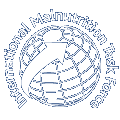Reduction of unnecessary transfusion and intravenous fluids in severely malnourished children is not enough to reduce mortality
Bachou H, Tumwine JK, Mwadime RK, Ahmed T, Tylleskar T.
Management according to the WHO protocol for severe malnutrition can reduce the need for blood and IV infusions
AIM:
To test whether standardising the use of blood transfusions and intravenous (IV) infusions could reduce fatality in severely malnourished children admitted to Mulago Hospital, Kampala.
METHODS:
Improved adherence to the WHO protocol for blood transfusion and IV fluids was effected in patients with severe malnutrition by continuous medical education. A ‘before and after’ design was used to study 450 severely malnourished children (weight-for-height < -3 Z-score or presence of oedema) under 60 months of age. A total of 220 pre- and 230 post-‘improved practice’ patients were enrolled consecutively during the periods September to November 2003 and September to December 2004, respectively. Patients were followed up until discharge or death. The Kaplan-Meier survival curve and the Cox regression hazard model were used for univariate and multivariate analyses, respectively.
RESULTS:
Overall case fatality was 23.6% (52/220) in the pre-period and 24.8% (57/230) in the post-period (p=0.78). Most of the deaths occurred in the 1st week of admission (73%, 38/52 in the pre-period and 61%, 35/57 in the post-period) and were of children who had received blood transfusion or IV infusion or both in the pre-period. Mortality in children transfused and/or infused was significantly reduced in the post-period (82%, 31/38 in the pre-period vs 23%, 8/35 in the post-period, p=0.008). In the post-period, there was a significant reduction in the number of inappropriate blood transfusions (18%, 34/194 vs 3.5%, 8/230, p=0.01) and IV fluid infusions (27%, 52/194 vs 9%, 20/230, p<0.001). Survival improved in children who received blood transfusions in the post-period [hazards ratio (HR) 0.22, 95% CI 0.30-1.67 vs HR 4.80, 95% CI 1.71-13.51], as did that of children who received IV infusions (HR 2.10, 95% CI 0.84-5.23 vs HR 3.91, 95% CI 1.10-14.04).
CONCLUSION:
Management according to the WHO protocol for severe malnutrition can reduce the need for blood and IV infusions. However, further studies are required to verify whether full implementation of the WHO protocol reduces the high case fatality in sub-Saharan hospitals.Click this link for the full article
